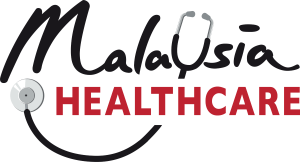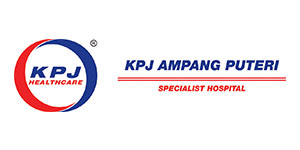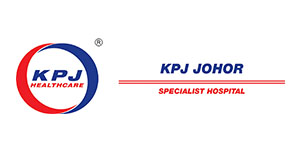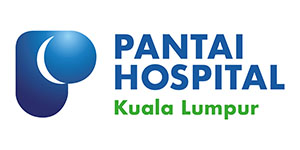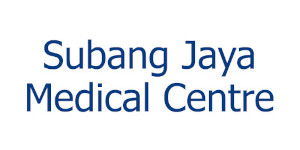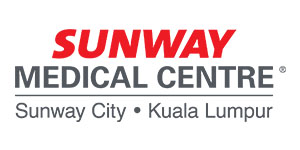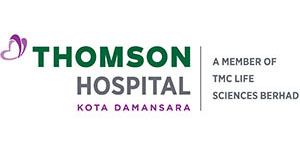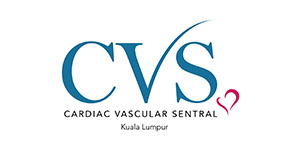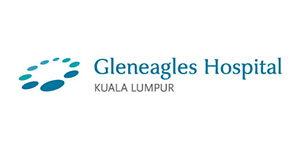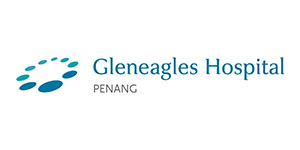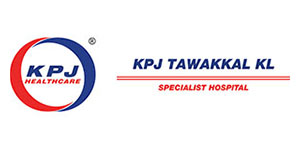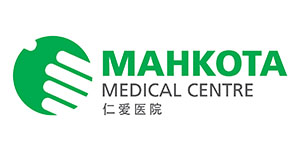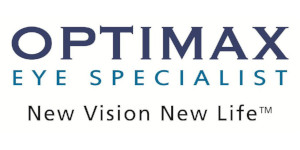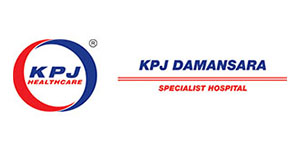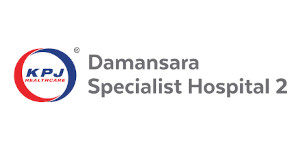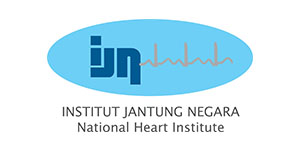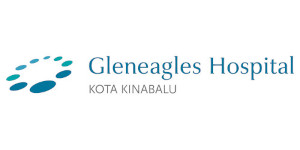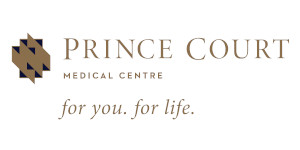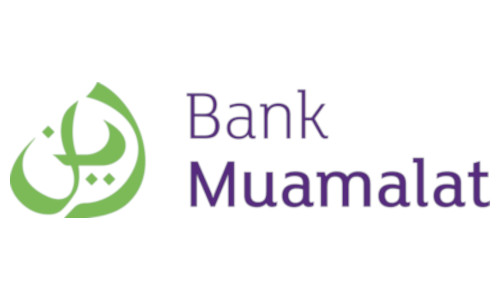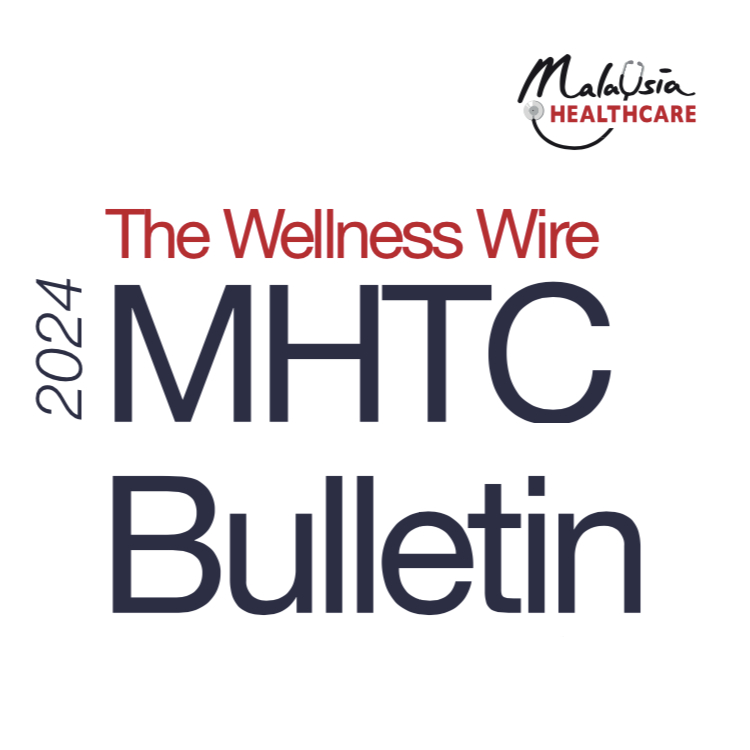
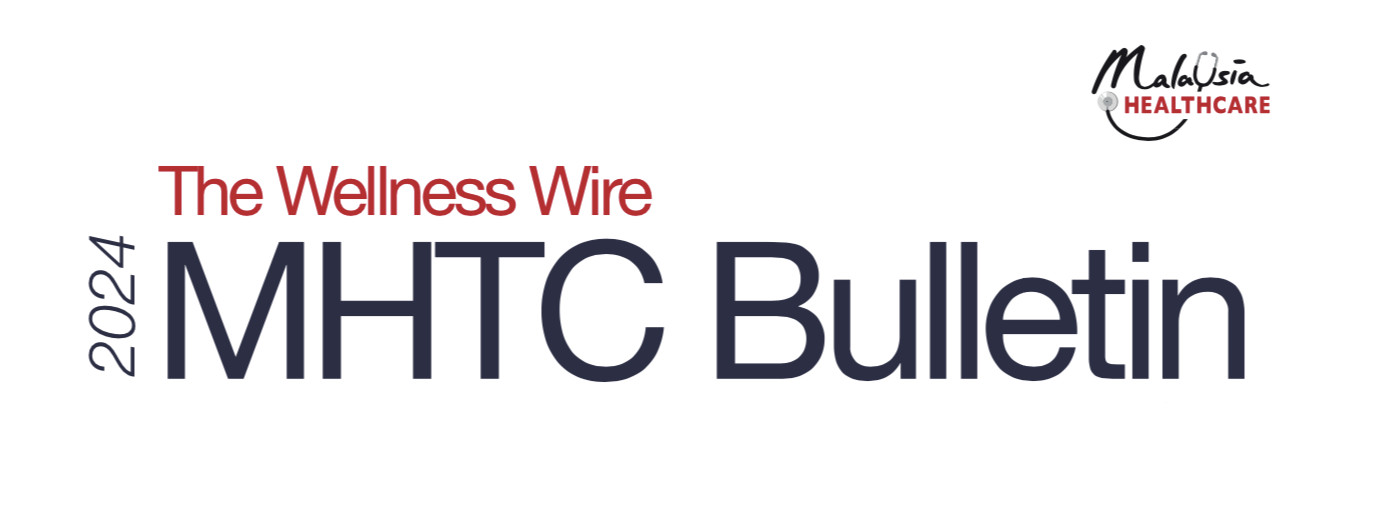
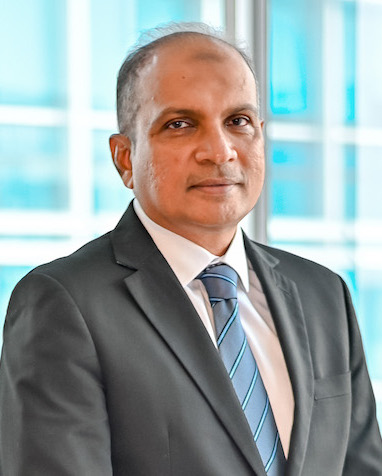
A Message from
Dr. Mohamed Ali
Chief Executive Officer,
Malaysia Healthcare Travel Council (MHTC)
Dear Members, Partners, Stakeholders, and Readers,
I hope this message finds you all in good spirits.
As we conclude another productive quarter for 2024, I wanted to take a moment to highlight some key successes and achievements that we've accomplished together. These accomplishments are a testament to our collective dedication, hard work, and commitment to excellence.
New Partnerships: We successfully forged strategic partnerships with partners, government agencies, and stakeholders, expanding our network and enhancing our offerings to better serve our members. These collaborations are a testament to our reputation as a trusted and reliable partner in the industry.
Locally, I was delighted to kick-off MHTC's first journey to Johor, where we paid a courtesy visit to 9 member hospitals. We are currently working on Johor’s strategy with government agencies and private hospitals that include - Regency Specialist Hospital, KPJ Southern Region Hospitals – KPJ Johor Specialist Hospital, KPJ Puteri Specialist Hospital, KPJ Pasir Gudang Specialist Hospital, Columbia Asia Hospital Iskandar Puteri, Gleneagles Hospital Medini Johor.
Overseas, our Indonesia team proudly represented MHTC at Indonesia's largest travel fair, the 'ASTINDO Travel Fair,' held at the BCA Expoversary 2024. Optimistic by the potential that Cambodia holds and remaining firm in our efforts to bolster healthcare offerings across ASEAN, MHTC returned to Phnom Penh for a series of engagements with stakeholders in the region. MHTC also had the pleasure of hosting the President-Elect of the Bangladesh-Malaysia Chamber of Commerce & Industry (BMCCI), Mr. Shabbir Khan, and their esteemed delegate at our headquarters.
We are indeed tremendously proud of the achievement of our Malaysian hospitals which were listed in Newsweek recently. Alongside 21 member hospitals of MHTC recognised, Malaysia solidifies its position as a leading healthcare travel hub. This collective recognition highlights Malaysia's diverse high-quality medical services tailored to global patients' needs, bolstering its reputation in the medical tourism industry.

We would also like to congratulate Gleneagles Kuala Lumpur and Sunway Medical Centre for making it into the top 250 World’s Best Hospitals of 2024 by Newsweek, marking Malaysia’s first entry in the world rankings. This reflects our unwavering commitment to delivering exceptional value and exceeding customer expectations at every touchpoint. Kudos to all the hospitals listed and looking forward to seeing many more such accomplishments in the near future.
I would also like to convey heartfelt congratulations to our esteemed members, KPJ Damansara Specialist Hospital and Damansara Specialist Hospital 2 (DSH2), for making history as the first hospitals in Malaysia to join the Mayo Clinic Care Network.
As we celebrate these achievements, let us also remain focused on our goals and continue to strive for excellence in everything we do. Together, we have the power to overcome challenges, seize opportunities, and achieve even greater success in the months ahead.
Thank you all for your hard work, dedication, and relentless pursuit of excellence. Here's to a year filled with achievements and reaching new heights!
Malaysia Healthcare Dedicated Immigration Counter at KLIA
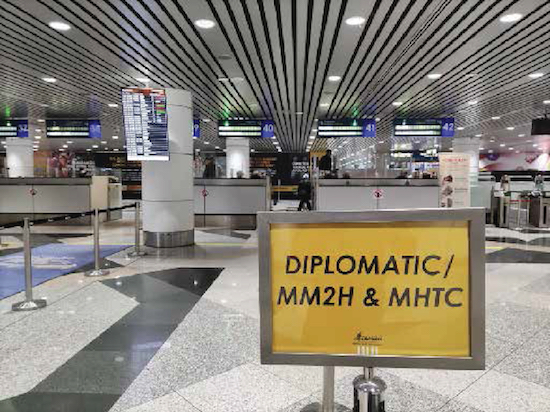

Amena Begum – Bangladesh
“Very fast Immigration clearance. The staff is so friendly and I feel safe and secured. Thank you Ruby for helping me today”

Amin Aulia – Indonesia
“Today's service is very good.. the staff is also friendly. Thank you for the warm hospitality”
The Malaysia Healthcare Meet & Greet Service available at KLIA Terminal 1 and KLIA Terminal 2 offers the first touchpoint upon health tourists arrival in Malaysia where; health tourists arriving at these two airports will be received at the aerobridge and escorted to the immigration counter.
As announced by Immigration Department of Malaysia last year, a dedicated lane will be arranged especially for health tourists coming into Malaysia.
Together with MHTC personnels from the Malaysia Healthcare Lounge, health tourists will be assisted for a faster and smoother immigration clearance (subject to adequacy of relevant documents and no other immigration issues raised towards them).
The Malaysia Healthcare Meet & Greet Service is open to all MHTC member hospitals and strategic partners. We are committed to offer a seamless patient experience to health tourists arriving at our shores as we gear towards our aspiration to offer the best #MalaysiaHealthcare experience by 2025.
Malaysia's Robotic Surgery Revolution: Transforming the Landscape of Medical Tourism
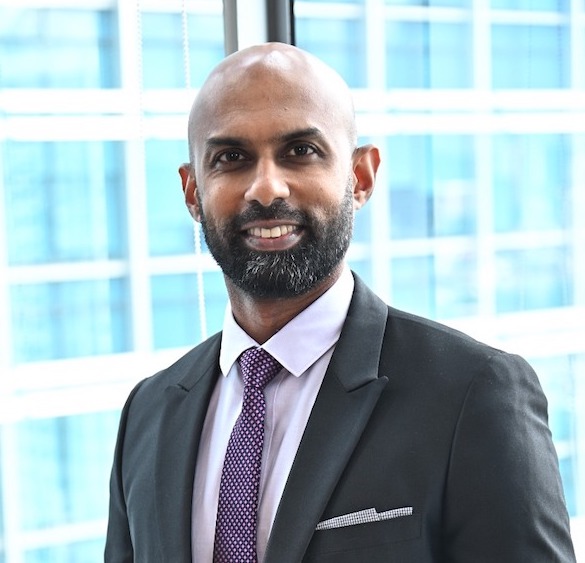
Dr. Vicknesh Krishnan
Vice President Healthcare,
Malaysia Healthcare Travel Council (MHTC)
In a world where medical advancements are reshaping the healthcare landscape, Malaysia is emerging as a beacon of innovation and excellence in the realm of medical tourism. The country’s unwavering commitment to adopting cutting-edge robotic surgical systems in its premier hospitals is revolutionising the way surgeries are performed, offering patients from around the globe access to minimally invasive, precision-driven treatments that promise unparalleled results.
At the forefront of this transformation, esteemed healthcare institutions in Malaysia who have embraced, for example the da Vinci Surgical System, a marvel of modern medicine that empowers surgeons to perform intricate procedures, from prostatectomies and hysterectomies to cardiac valve repairs, with unrivalled precision and control. The adoption of the Mazor Renaissance Robotic Guidance System in several hospitals represents a significant advancement in spinal surgery technology. This system combines robotics and imaging to enhance the accuracy and safety of spinal procedures, ultimately leading to reduced recovery times and fewer complications for patients.
Besides this, several forward-thinking institutions have embraced groundbreaking technologies like the ROSA Knee System for total knee arthroplasty and also the Mako Robotic-Arm Assisted Surgery System for hip and knee replacements, ensuring that patients receive the most advanced and effective treatments available.
The benefits of robotic surgery extend far beyond the operating room, encompassing a wide range of advantages that significantly impact patient outcomes and experiences, which includes smaller incisions, reduced blood loss, and faster recovery times, all while enduring less pain and scarring. The enhanced precision and accuracy afforded by robotic systems translate into improved surgical outcomes and a reduced risk of complications, giving patients the peace of mind they deserve.
But the advantages of robotic surgery extend far beyond the physical realm. A groundbreaking study published in the Journal of Robotic Surgery reveals that patients who underwent robotic-assisted surgery reported higher satisfaction rates and a more positive overall hospital experience compared to those who underwent traditional surgery (Smith et al., 2020). This resounding endorsement serves as a testament to Malaysia’s unwavering dedication to delivering exceptional patient care and solidifying its position as a leader in the global medical tourism arena.
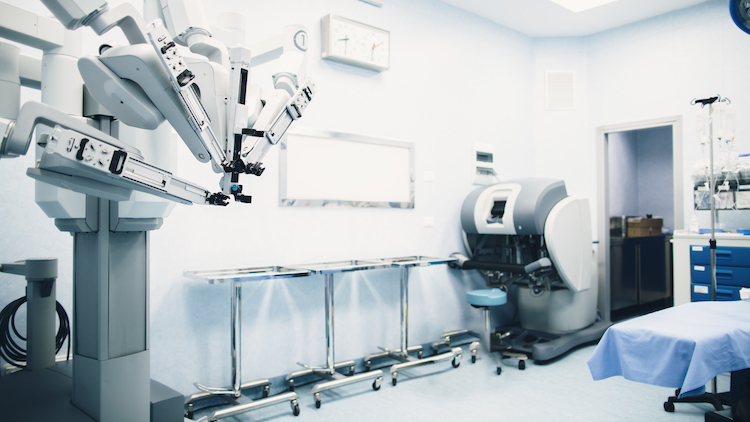
As the burden of diseases such as cancer, cardiovascular disorders, and orthopaedic conditions continues to rise in the region, Malaysia’s state-of-the-art robotic surgical systems present a beacon of hope for patients seeking high-quality, cutting-edge treatments. The country’s robust healthcare infrastructure, skilled medical professionals, and unwavering commitment to investing in the latest medical technologies make it an oasis of healing for medical tourists from neighbouring countries and beyond.
The Malaysian government’s initiative to promote robotic surgical systems in the country’s healthcare sector is indeed a strategic move aimed at enhancing Malaysia’s position in the global medical tourism industry. The integration of robotic surgical systems in Malaysian hospitals is not merely an advancement; it is a testament to the country’s unwavering commitment to redefining the future of healthcare.
Sports Cardiology –
An important yet untapped speciality

Prof. Dato’ Seri Dr Jeffrey Jeswant Dillon
Director of Cardiovascular Sports & Fitness,
Institut Jantung Negara (IJN)
Sports cardiology is one of the rapidly growing subspecialties of cardiology that is now advancing for the care of athletes and active individuals who are known to have diagnosed heart ailments and also for those with undiagnosed cardiovascular conditions. The target population includes competitive athletes, active sports enthusiasts and also those sedentary individuals who endeavor to start sports and exercise for the first time. The sports cardiology team includes those with expertise in cardiology, cardiothoracic surgery, pediatric cardiology, especially congenital heart disease and genetic diseases, cardiovascular imagers, electrophysiologists, heart failure specialists and exercise physiologists.
The effects of working out your heart can be categorised into three categories. The good, the bad and the ugly. The good characteristics include the benefits of exercising and staying active for the heart. The bad could indicate the development of the athlete’s heart syndrome, that may confuse accurate diagnosis if unrecognised and may lead to unnecessary concern and treatment strategies. Finally, the ugly comprises the sudden death syndrome while exercising.
It is important to know the mechanism behind these classifications. The positive benefits of regular exercise and sports include good control of body weight, blood sugar, cholesterol and blood pressure, all of which collectively reduces the risks of heart attack and stroke to the individual. Exercise also reduces anxiety and depression leading to beneficial mental health wellbeing. The term the athlete’s heart refers to the normal physiological changes the heart undergoes in a person who regularly does strenuous aerobic/endurance exercise such as high intensity running, cycling or swimming and also in those who do high intensity power/resistant training exercises such as weight lifting. For the endurance athletes the heart chambers may adapt to be larger (dilatation) in response to the prolonged exercise stimulus, while for the power athletes their heart muscles may get thicker (hypertrophy). It is important to recognise that these changes within the heart chambers and muscles are largely normal responses to exercise and not to be confused as being a pathological feature of organic heart disease that may cause anxiety to the athletes and worse still to physicians who might send them for further unnecessary investigations and treatment.
A not uncommon scenario that has been in the spotlight nowadays is endurance athletes, power athletes like bodybuilders and even amateur exercise enthusiasts collapsing with sudden death during exercise. The causes of sudden cardiac death in athletes can be broadly categorize according to their age groups; the senior (master) athletes above the age of 35 years and the young athletes have different aetiology for sudden cardiac arrest. In the master athletes’ group, atherosclerotic disease caused by deposit of cholesterol plaques in the coronary arteries is the most common risk factor for acute myocardial infarct (heart attack) leading to sudden cardiac death (SCD). The common risk factors to develop atherosclerosis and heart attack include hypercholesterolemia, obesity, hypertension, diabetes mellitus, smoking, a strong family history and sedentary lifestyle.
Hypercholesterolemia is identified by having a high level of total and LDL cholesterol in the blood leading to cholesterol plaque build-up in arteries in the body including the coronary arteries of the heart and when present, is typically treated by statin group of medications. Statin related muscle fatigue may be more common amongst athletes. Hence treatment with lipid lowering agents should be stratified according to the coronary disease risk profile and balanced against side effects and exercise/sporting targets. Athletes who have undergone acute coronary events should be encouraged to continue to participate in a cardiac rehabilitation program and return to active exercise and sports under the supervised care of a sports cardiologist.
Hypertension is a common cardiovascular condition, even amongst the healthy athletic population. A thorough evaluation of an athlete should involve a detailed history and measurement of their blood pressure during each visit. Measurements of blood pressure during exercise may be useful in diagnosing those with concealed hypertension or to help evaluate effectiveness of ongoing treatment. Depending on the extent of the elevated blood pressure, some athletes would be restricted from sports with particularly high static strain, for example, weightlifting or martial arts, until hypertension is controlled.
In the young athletes, the causes of sudden cardiac death differ from their more senior counterparts. The common causes in the apparently young fit individuals include hypertrophic cardiomyopathy (HCM), anomalous coronary arteries, long QT syndrome, heart valve diseases, diseases of the aorta and myocarditis. Hypertrophic cardiomyopathy (HCM) is a genetic condition that causes the heart muscle to enlarge and may obstruct blood flow out of the heart, leading to abnormal heart rhythm (arrhythmia), heart failure and sudden death. Long QT syndrome is another genetic disorder where abnormality of the electrical system of the heart may trigger arrhythmia during exercise and stress which may be fatal. Anomalous origins of coronary arteries from the aorta is a congenital condition that may cause chest pain or sudden cardiac arrest during exercise. These group of young athletes may be suspected to have these dangerous but treatable conditions if they present with symptoms of chest pain, breathlessness or fainting. Those that are symptomatic or have an episode or resuscitated cardiac arrest or a family history of sudden death are recommended to be fully evaluated and monitored by a sports cardiologist team for diagnosis, treatment and rehabilitation for safe return to play.
When an athlete presents with symptoms of chest pain, breathlessness or syncope (fainting), it could be due to benign and malignant causes. Chest pain and syncope or near syncope during exercise or sports events typically warrant immediate restriction from sport and evaluation. Syncope and presyncope can be physiologic responses to exercise such as vasodilation and blood pooling that can lead to excessive fall in blood pressure (BP) when an upright position is assumed. Athletes over the age of 35 are more likely to present with atherosclerosis as the underlying cause. Evaluation should highlight whether symptoms occurred during or after exercise with the latter more likely to be benign. A detailed physical examination and other tests should include the ECG, echocardiography, ambulatory rhythm monitoring and maximal exercise tolerance test. Basic laboratory evaluations should be performed to rule out anemia, thyroid disorder and other metabolic abnormalities. In addition, ECG, echocardiogram and maximal effort exercise stress test are recommended as part of a complete work-up.
We must be mindful that active individuals are not immune to heart conditions that may endanger lives during physical activities. Hence, before embarking on strenuous exercise, it is vital to get your heart health checked. At IJN we offer Active Fitness Screening program. This package encompasses general assessment, cardiac service investigation, physiotherapy, laboratory tests, consultation by cardiology clinical specialist, refreshment and finally with the report summary.
In the sports world, a healthy heart equals optimum performance. Whether an individual is a professional or an amateur, IJN also offers Active Plus Endurance Screening programme which helps to determine the risk of heart problems, and helps to measure fitness levels and offers a sport prescription to keep you at the top of your game. This screening plan encompasses general assessment, cardiac service investigation that includes electrocardiogram, VO2 Max and 2D echocardiogram, imaging investigation, physiotherapy, laboratory tests, consultation by cardiology clinical specialist, consultation by sports medicine specialist, refreshments and finally with the report summary.
At IJN sports cardiology clinic, we offer evaluation by a cardiologist and an exercise physiologist. They will carry out a full clinical evaluation, including assessment of symptoms, medical and athletic history, and a comprehensive physical examination.
A cardiopulmonary exercise test (PET/CDP/Vo2max) is an exercise test in which your lung and heart’ response to various levels of exercise will be tested. This test is the best test to measure how our heart and lungs cope with daily activity and exercise. This may help identify the reasons why exercise is difficult and may be causing breathlessness, disease progression and fitness levels.
In this test, you will be asked to run on a treadmill or pedal on a bicycle ergometer, while your heart beat rhythm and as well as breathing is measured. The intensity of this exercise will increase gradually and the total duration can vary from about 10 minutes to about 40 minutes. During this test, patients will be using a mask that measures oxygen use during exercise on a treadmill, bicycle or other device. This test provides comprehensive information on maximal heart rates, peak oxygen consumption (VO-2 max) and your anaerobic threshold.
In summary sports cardiology advocates for individuals how to be safe from cardiovascular events while they exercise and to prevent sudden cardiac arrest and death. We would encourage any individual above the age of 35 years to have at least one screening medical check-up before embarking on or chasing your sporting ambitions. Younger athletes who are symptomatic or have a family history of sudden death are also advised to be evaluated to exclude cardiac abnormalities that may be dangerous if left unrecognized.
Preventing Overdiagnosis of Prostate Cancer with Improved Diagnostic Accuracy

Dato’ Setia Dr Tan Hui Meng
Consultant Urologist,
Subang Jaya Medical Centre (SJMC))
Prostate cancer is the third most common cancer among the male population in Malaysia after colorectal and lung cancer. However, despite these staggering numbers, compared to breast cancer, prostate cancer screening appears to be a very controversial topic in medicine.
To date most health professionals and the public at large are still lost and uncertain on how to go about preventive measures and the treatment of prostate cancer. Sometimes, early prostate cancers are localised and contained within the prostate. The cancer grows very slowly and may not cause problems for years or may not even become advanced cancer. In cases like these, patients do not need to be treated.
In the United States, the Preventive Services Taskforce (USPSTF) gave a Grade C recommendation on screening for prostate cancer, which means individuals do not necessarily need to screen for prostate cancer unless they have concerns and should discuss their concerns with their physicians. This recommendation came about as to reduce the overdiagnosis and overtreatment of prostate cancers.
This decision, however, has resulted in an increasing trend of prostate cancer mortality and morbidity, causing much suffering and compromising the quality of life for patients. The challenge today is to come up with a strategy to screen the right population and find lethal prostate cancers. Equally important, we will also need new treatments which are less invasive and cause less morbidity to individuals.
Improved accuracy with mpMRI screening
For more than 30 years, the medical profession did not make headway with regards to the diagnosis and management of prostate other than developing robotic techniques and better radiotherapy to remove the tumours. The diagnosis using systematic non-targeted transrectal ultrasound scan (TRUS) guided biopsy is highly inaccurate as it has high false negative rate. This is dangerous as it misses at least 50% of cancer.
The transformative advancement in the diagnosis and treatment of prostate cancer was the development of multiparametric MRI (mpMRI) of the prostate. Using mpMRI as a triage can spare significant number of men from undergoing unnecessary prostatic biopsies and avoiding both the physical and psychological trauma and morbidity especially if TRUS biopsies are performed.
Many studies have confirmed that mpMRI is highly reliable in identifying more than 90% of men with clinically significant and lethal prostate cancer. This method was reported to be much more sensitive (93%) in detecting prostate cancers compared to TRUS biopsies (48%). MpMRI as a triage also detects much fewer clinically unimportant prostate cancer (54% fewer) compared to using the traditional TRUS biopsy.
In other words, mpMRI reduces overdiagnosis of clinically unimportant cancer prostate and improves detection of clinically significant and deadly prostate cancer.
To screen or not to screen for prostate cancer?
Many screening studies have shown that men diagnosed with prostate cancers whether they are treated or not, their survival outcome is generally over 10 year or so. This shows that a majority of the men with prostate cancer detected by screening do not benefit from treatment. Instead, they suffer the consequence of treatment like losing potency, and experiencing urinary or rectal symptoms with occasional incontinence.
However, long term studies show the benefits of screening are observed after consistent follow ups for 12 years or more. The Goteborg Randomised Cancer Prostate Screening Trial done in Sweden revealed that for men who have undergone over 14 years of follow up and completed the screening, there was a 66% decrease in advanced prostate cancer in the screened population compared to the population of men who were randomised to non-screening arm.
Therefore, one can conclude that men who have serial PSA screening and then treated if prostate cancer is detected, they have a 66% less chance of developing advanced prostate cancer–which often results in very painful bone metastases. There was also a 56% lower mortality rate in the screened population. Extrapolating from this result, in the Swedish population, PSA screening can save 5,700 out of 1 million screened men from dying of prostate cancer.
The best way forward for prostate cancer screening & treatment
In summary, prostate cancer is still a significant life-threatening disease. Early detection and early prediction of the disease is crucial, whereas screening in men with long life expectancies is beneficial. Overdiagnosis and overtreatment issues can be addressed with targeted screening and biopsy only for at-risk patients. This aims for early detection & diagnosis of localised lethal prostate cancer, which is fully curable.
If diagnosed with non-lethal prostate cancer (especially low-grade cancer), individuals only require good active surveillance with a follow-up mpMRI. They should also repeat biopsy of the prostate if necessary. It is crucial for those with intermediate grade prostate cancer (ISUP 2) or large volume low grade prostate cancer (> 6mm core cancer tissue) to receive careful active surveillance paired with good clinical judgement and a follow up mpMRI as well.
Men with localised lethal prostate cancer will need ablative treatment with surgery, radiotherapy or occasionally brachytherapy. Counselling for adverse events like erectile dysfunction and occasional urinary incontinence following ablative treatments should also be given.
MpMRI has greatly improved the diagnosis of clinically important prostate cancer and better genomics will help predict prognosis of the disease. Transperineal mpMRI – ultrasound fusion prostatic biopsy is the way forward. Focal therapy like HIFU, Irreversible Electrophoresis or targeted ablation will probably play an increasing role especially for patients with favourable intermediate risk or low grade large volume prostate cancer.
The future is definitely clearer with both the medical community and public being more confident in this era of advanced diagnostic and treatment of prostate cancer covering the whole spectrum of the disease.
IJN Inspires Hope for Heart Patients
Date : March 11th
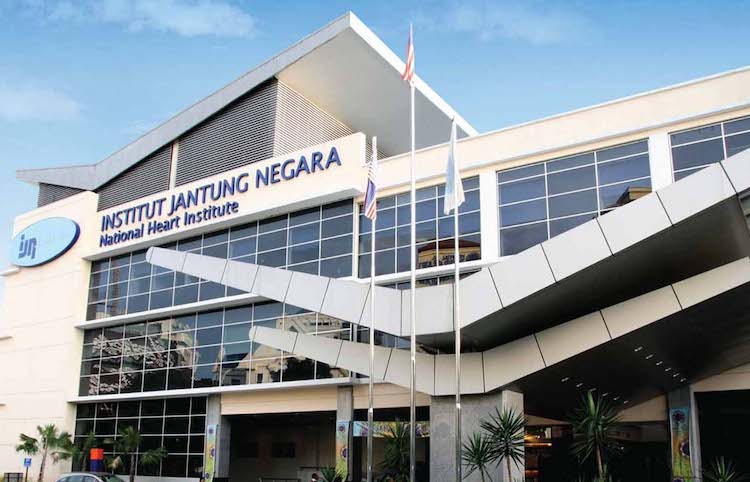
MHTC is ecstatic to share the successful heart transplants performed at Institut Jantung Negara (IJN), marking significant strides in healthcare.
The successful heart transplants, carried out on two patients in their late teens diagnosed with non-ischaemic dilated cardiomyopathy, hold significant importance. These young individuals, with their promising futures and boundless potential, embarked on a challenging journey before receiving the life-saving heart transplants. Prior to the procedure, they persevered through their difficulties with Left Ventricular Assist Device (LVAD) support, an implantable mechanical pump.
This accomplishment underscores the effectiveness of cutting-edge medical technology and the exceptional professionalism of IJN's medical team, marking a remarkable milestone in the field of cardiac care.
Kudos to the IJN medical team for their outstanding dedication and expertise in making these life-saving procedures possible!
MHTC Paves The Way
With the year kicking off to a good start, here are some general insights into MHTC’s proactive approach to promoting Malaysia as a leading medical tourism destination in the region.
MHTC is focusing on expanding its reach to new developmental markets within the region, with targeted marketing campaigns, participating in international healthcare events and conferences, and establishing partnerships with healthcare providers and agencies in key markets. MHTC will continue to work with hospitals, clinics, and healthcare professionals to maintain accreditation, certifications, and quality assurance programs.
In addition, MHTC will continue to encourage healthcare providers to adopt cutting-edge technologies and procedures, such as robotic surgery, telemedicine, and personalised medicine. Overall, MHTC’s hands-on approach and strategic initiatives are instrumental in promoting Malaysia’s healthcare sector on a regional and global scale. These efforts contribute to the growth and success of medical tourism in the country while ensuring that patients receive top-notch medical services.
MHTC Members’ Day
Date : 9th January
Venue : Auditorium Azman Hashim, AICB Centre of Excellence (ACE)
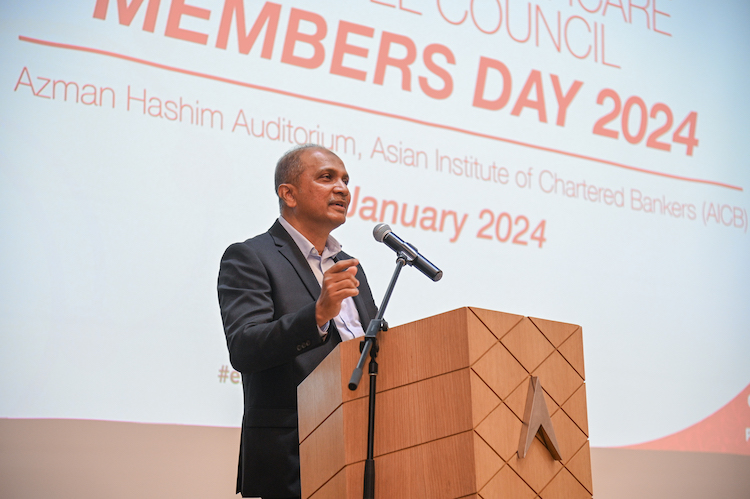
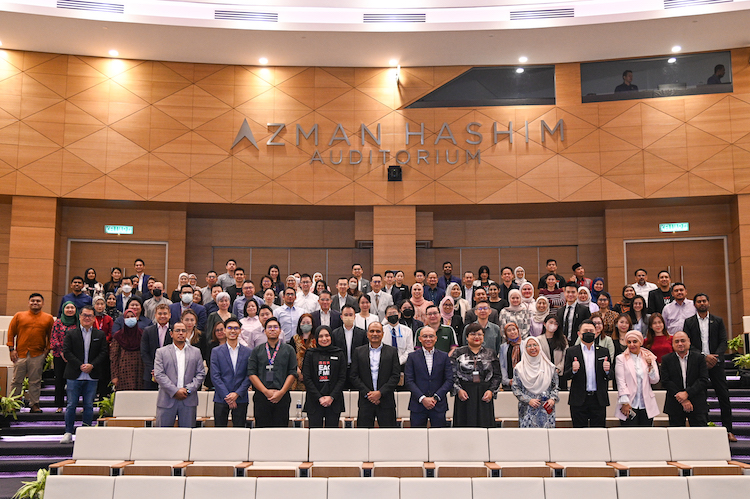
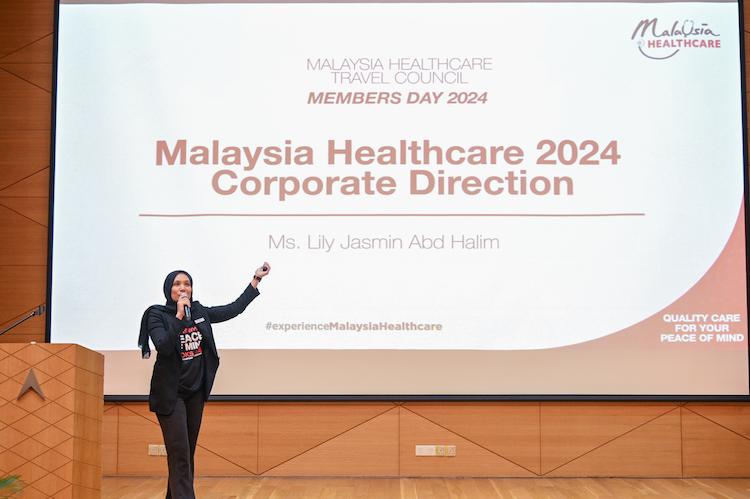
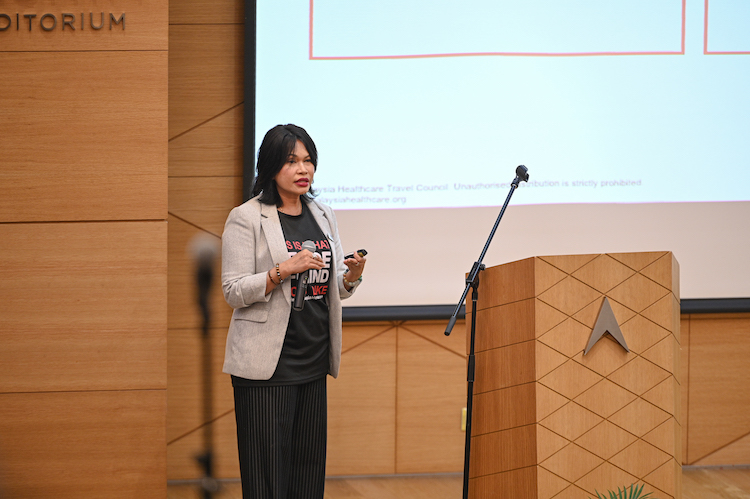

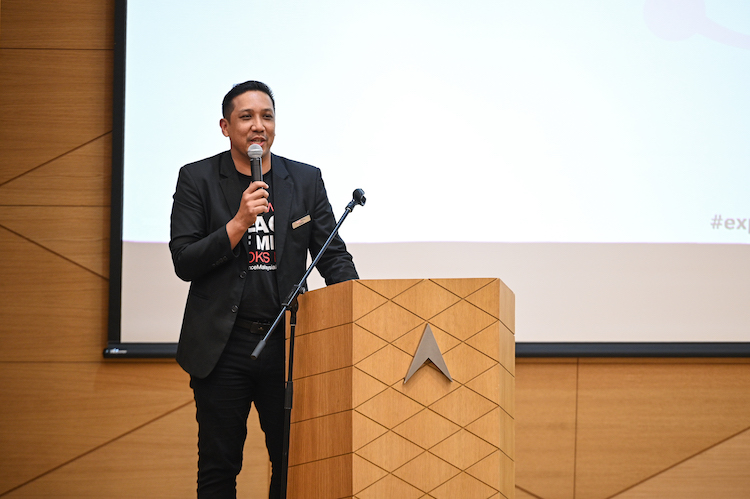
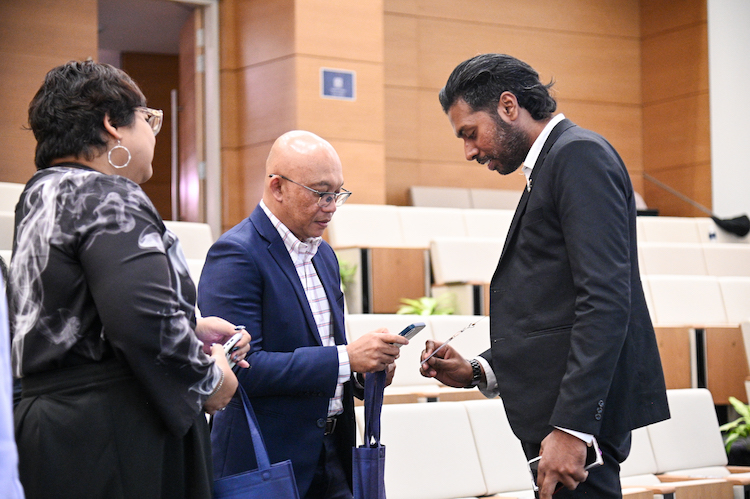
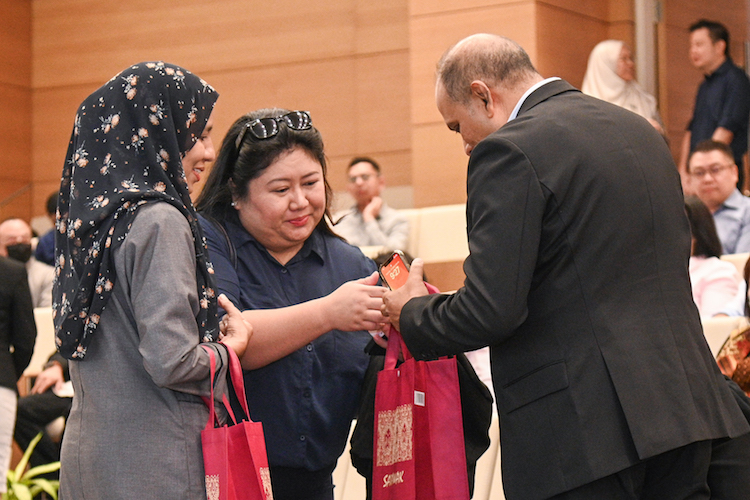
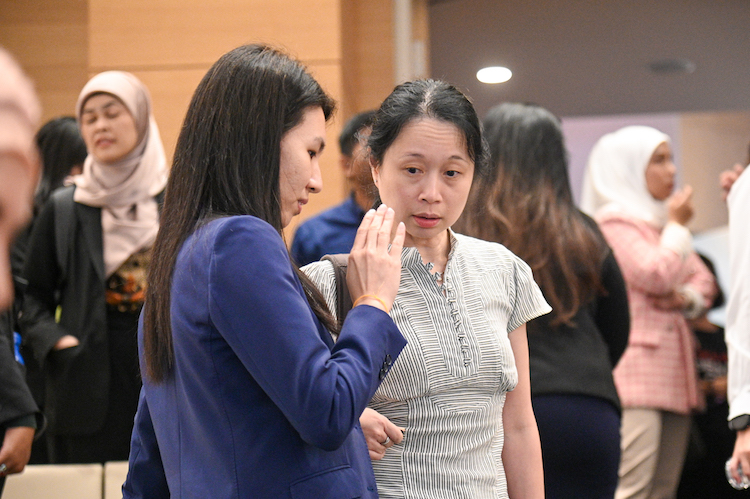
Malaysia Healthcare. MHTC Industry Open Day
Date : 10th January
Venue: Auditorium Azman Hashim, AICB Centre of Excellence (ACE)


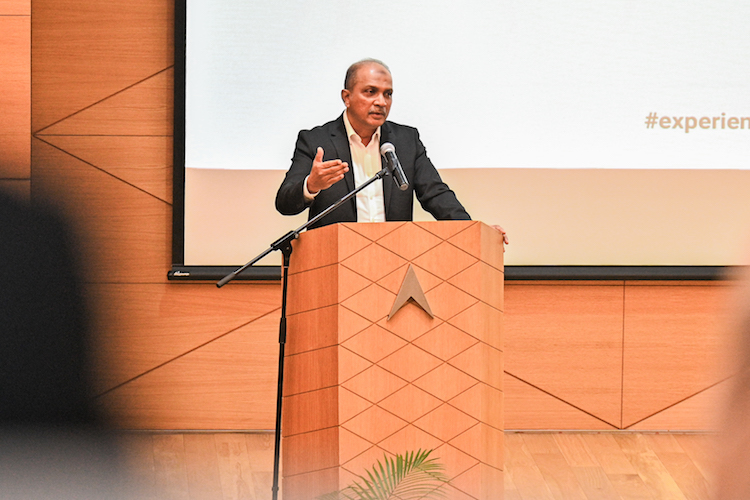
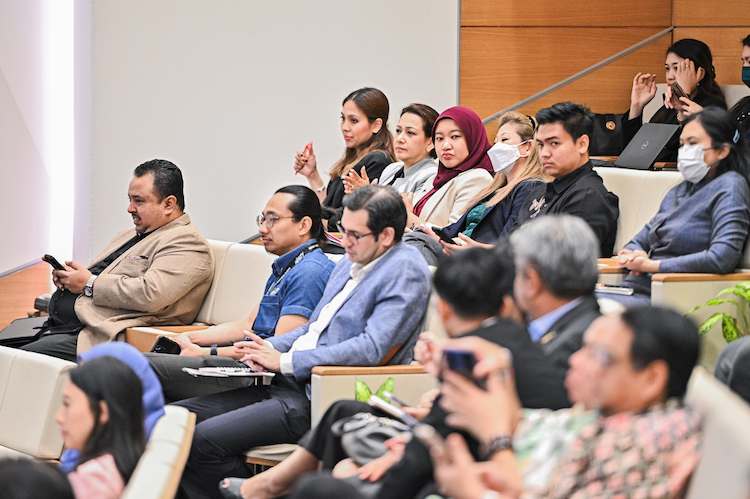

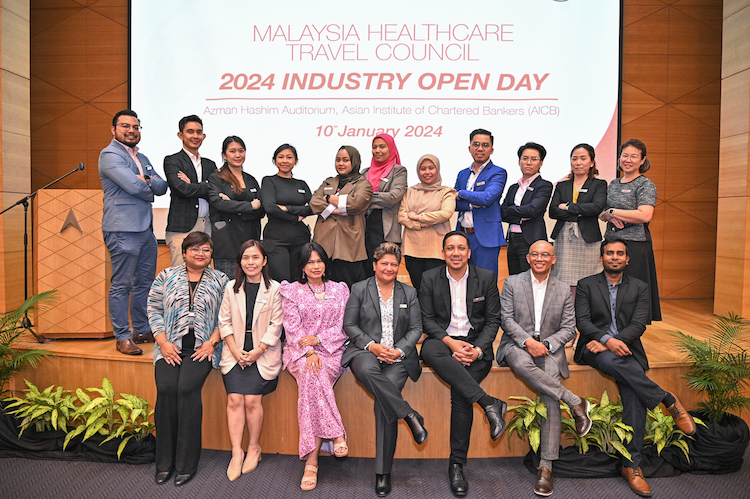
This event was to share MHTC 2024 marketing plans and key activations with non-MHTC-member industry stakeholders to ensure incorporation of Malaysia Healthcare agendas in their respective promotional strategies and activities 2024.
Oncology Activation for World Cancer Day
Month: February
Platform: Malaysia Healthcare social media
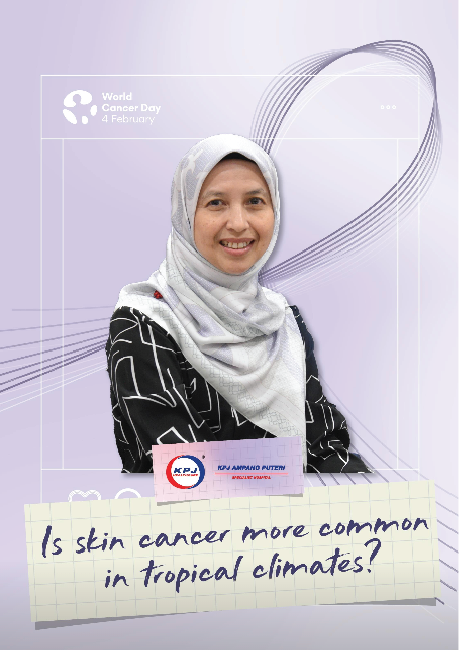
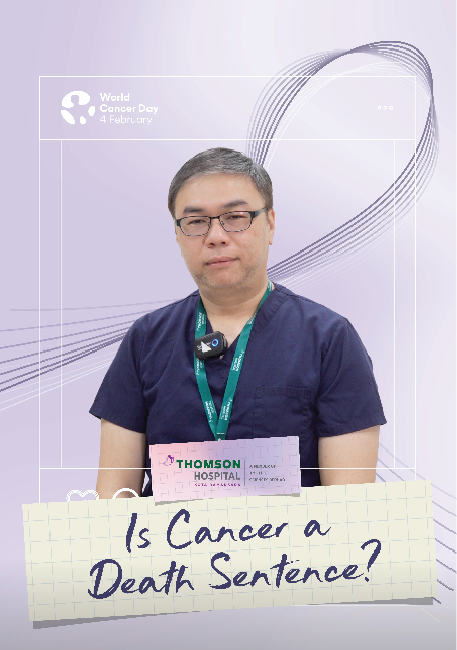
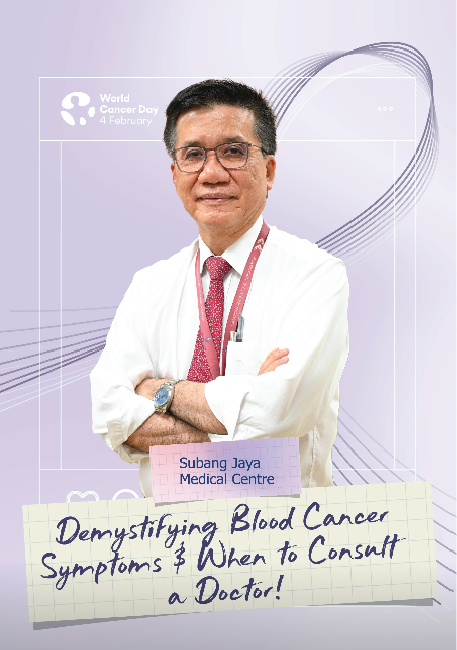
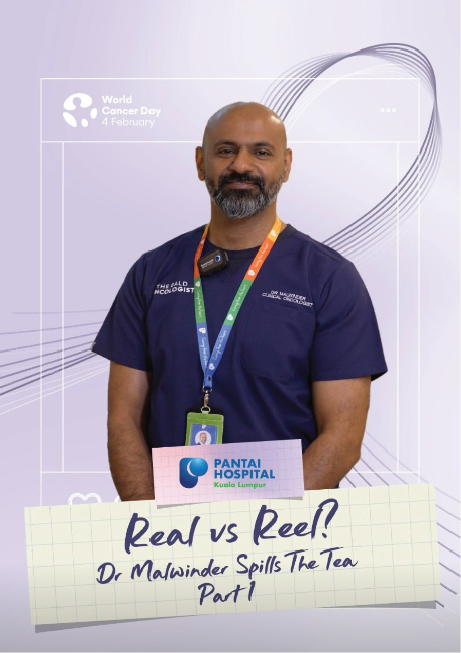
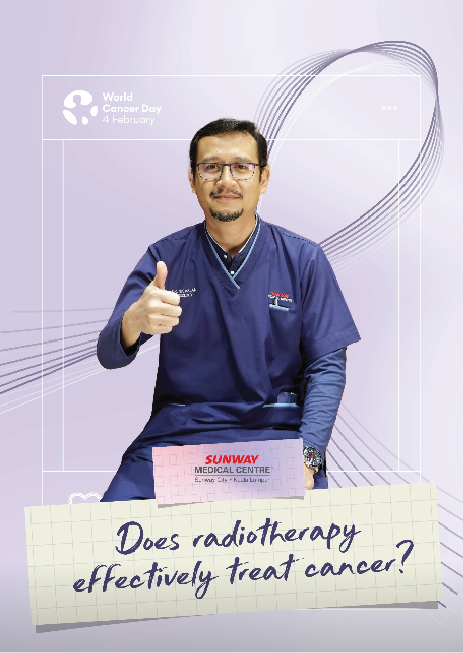
The first tactical activation for Oncology in conjunction of World Cancer Day in February 2024. Participating Hospitals were requested to provide their oncology packages, nominate a specialist for the video interview and identify a cancer patient for a testimonial interview in sharing their experience on the cancer treatment.
6 Hospitals Participated
Sponsorship vouchers from participating hospitals for Cirebon Event by Tourism Malaysia (TM) Jakarta
Date: 2nd – 4th February
Venue: Super Block Mall Cirebon



The event held in Cirebon, Jawa Barat organised by Tourism Malaysia (TM) Jakarta, presents a valuable opportunity for member hospitals to enhance awareness and reach potential leads. By allocating a slot to promote medical tourism in Malaysia, we can tap into a niche market and showcase Malaysia’s capabilities in healthcare services to the attendees in Cirebon. This strategic collaboration allows promotion of Malaysia as a preferred destination for medical tourism, leveraging the event’s platform to attract interest and potential clients from the region.
10 Hospitals Participated
KPJ Healthcare Media
Familiarisation (FAM) Visit
Date: 15th – 18th February
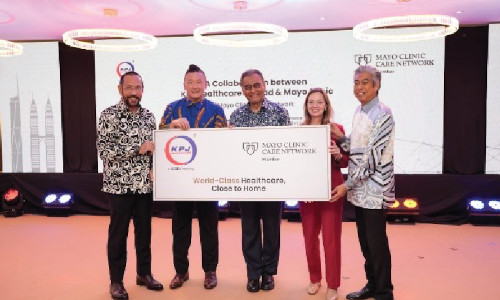
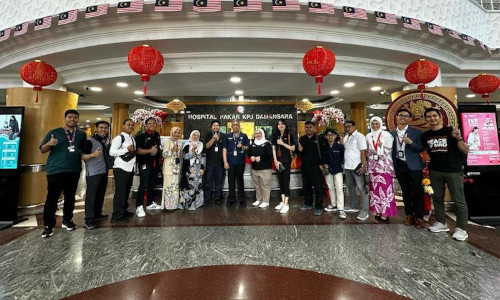
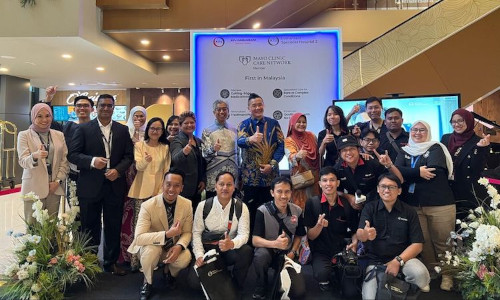
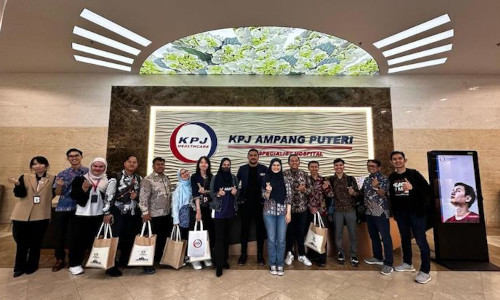
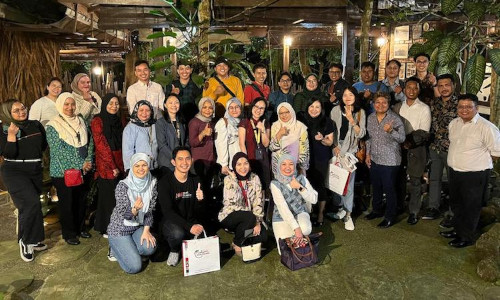
Malaysia Healthcare has forged a robust alliance with key figures in the Indonesian media, establishing a pivotal partnership that has significantly bolstered Malaysia Healthcare’s initiatives. In alignment with this collaborative spirit, MHTC is extending its support to KPJ Healthcare Berhad to arrange for a group of media to experience the services in KPJ hospitals. Additionally, KPJ Healthcare Berhad has entered a collaboration with Mayo Clinic.
4 Hospitals Participated
Courtesy Visit from the Bangladesh-Malaysia Chamber of Commerce & Industry (BMCCI)
Date: 21st February
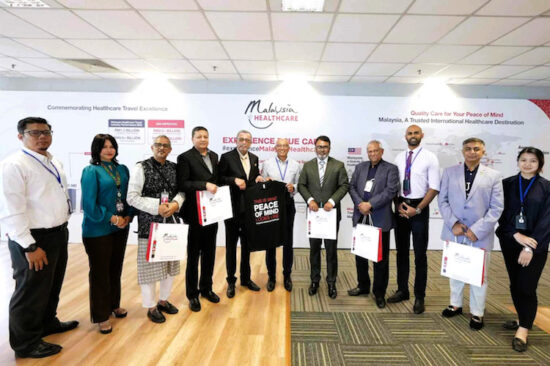
Continuing our practice of mutual respect, fraternity, and co-operation, particularly on development activities, we had the pleasure of hosting the President-Elect of the Bangladesh-Malaysia Chamber of Commerce & Industry (BMCCI), Mr. Shabbir Khan, and their esteemed delegate.
Through a fruitful exchange of ideas and insights, we look forward to further strengthening our collaborations to provide alternative options for Bangladeshi healthcare travellers and promote Malaysia as a premier destination for healthcare.
Private Hospital Association of Cambodia (PHAC) Conference Cambodia 2024
Date: 24th February
Venue: Phnom Penh Hotel
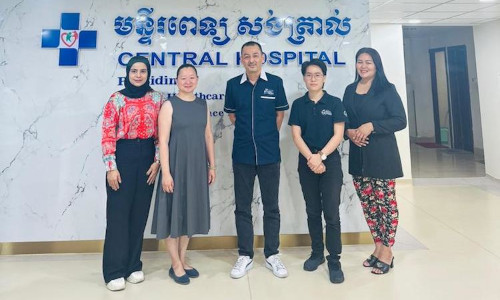
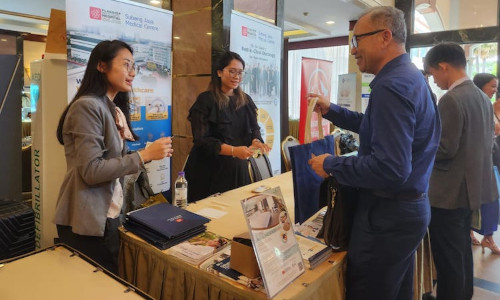
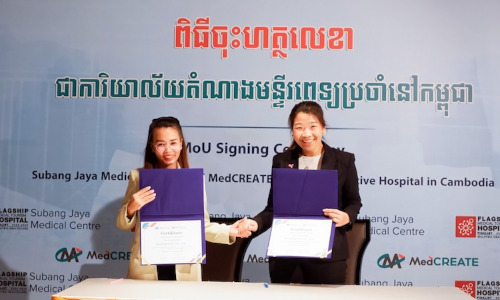
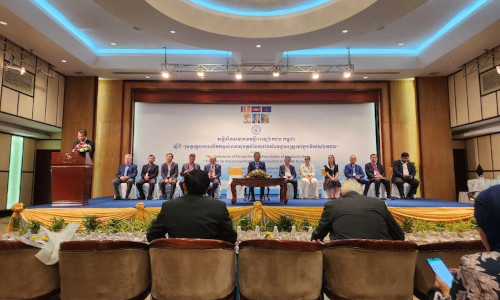
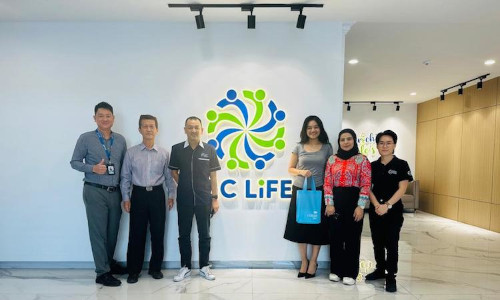
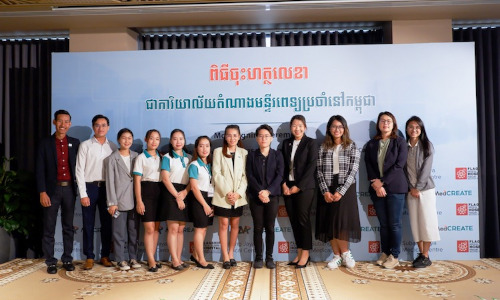
Optimistic by the potential that Cambodia holds and remaining steadfast in our efforts to bolster healthcare offerings across ASEAN, MHTC returns to Phnom Penh for a series of engagements with stakeholders in the region.
We connected with over 100 healthcare experts at the Private Hospitals Association of Cambodia (PHAC) Conference. MHTC also witnessed the signing of a Memorandum of Understanding (MoU), a new partnership between SJMC with MedCREATE, aimed to enhance healthcare services and patient care
in Cambodia.
Thank you to our participating member hospitals Gleneagles Kuala Lumpur, Institut Jantung Negara (IJN), and Subang Jaya Medical Centre (SJMC). We strongly believe continuous engagement will open more doors to Cambodian healthcare travellers to experience Malaysia Healthcare’s world-class offerings.
3 Hospitals Participated
Key industry players:
Private Hospitals Association of Cambodia (PHAC), Central Hospital,
Prudential Cambodia, GC Life Insurance PLC, and
Paragon International School
Medical Program with Bank Muamalat Indonesia exclusively for IHH Healthcare Malaysia hospital
Duration of program: 2024 – 2025
MHTC is pleased to invite our Members hospitals under IHH Healthcare Malaysia to participate in a bank collaboration with Bank Muamalat, a local Shariah Bank in Indonesia. Bank Muamalat has expressed interest in exploring the potential partnership with our members under IHH Healthcare Malaysia.
This collaboration aims to provide medical offers that would benefit their customers.
4 Hospital Participated
In collaboration with:
Experience Malaysia Healthcare (EMH) Stories Video Project

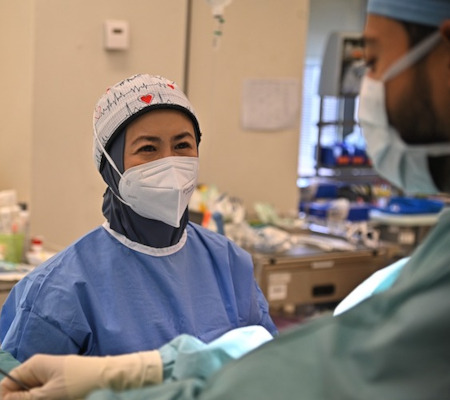
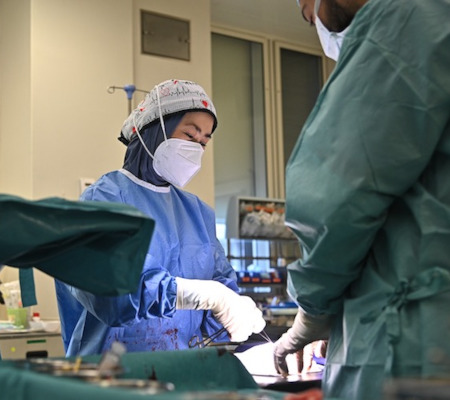
The EMH Stories video project is a special video series by Malaysia Healthcare, aiming to share inspiring stories from Malaysia’s healthcare travel sector. Our goals are to showcase expertise, enhance reputation, and increase brand awareness. The series covers Faces of MH, Success Stories, Breakthroughs, and Patient Stories. We plan to share these stories widely through social media, PR articles, events, EDM, and digital channels to reach our audience effectively.
For the first EMH Video project, the team successfully conducted an interview with a specialist from Prince Court Medical Centre in conjunction with World Health Day. The focus will be on showcasing how Malaysia Healthcare empowers our audience to take charge of their health.
Stay tuned for more inspiring stories!

